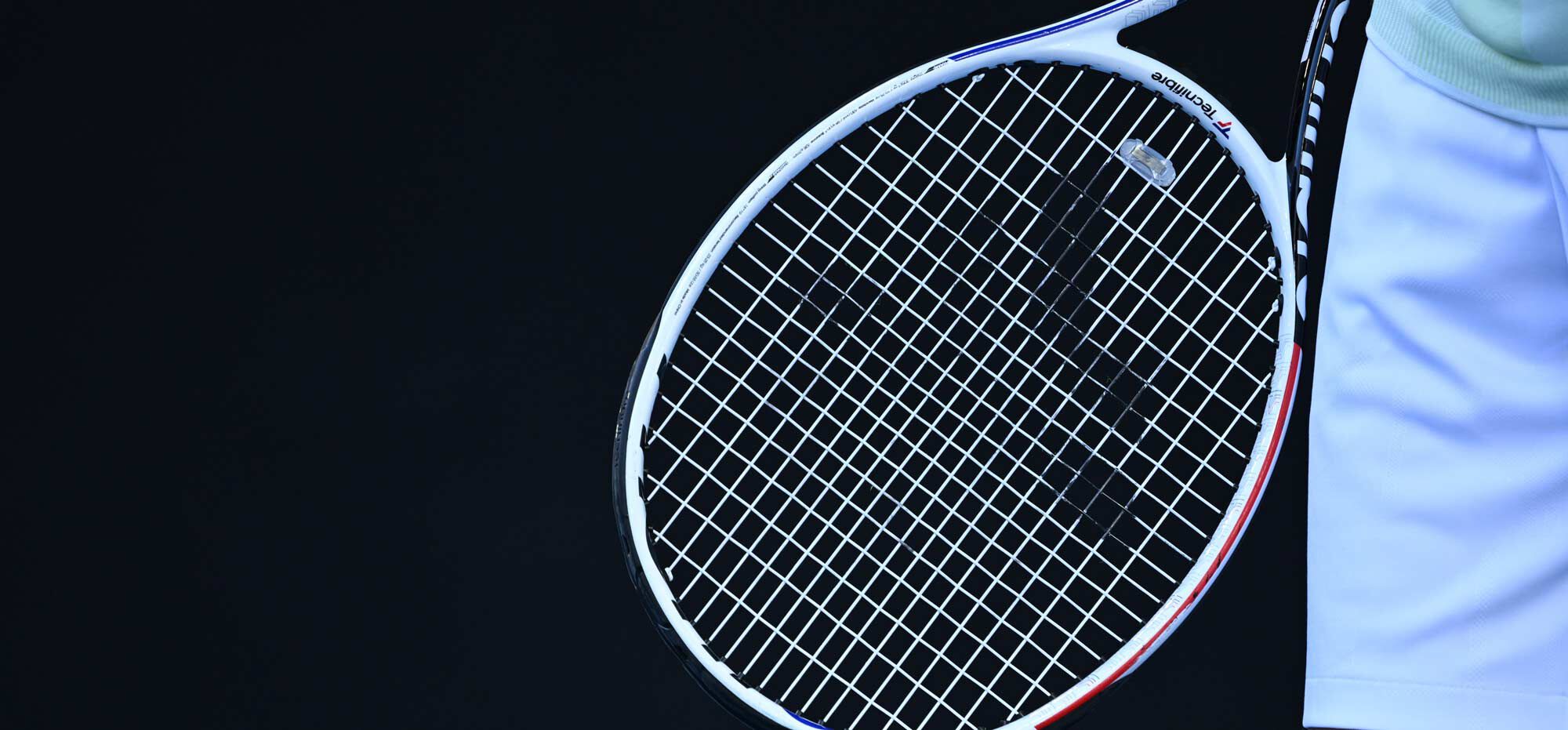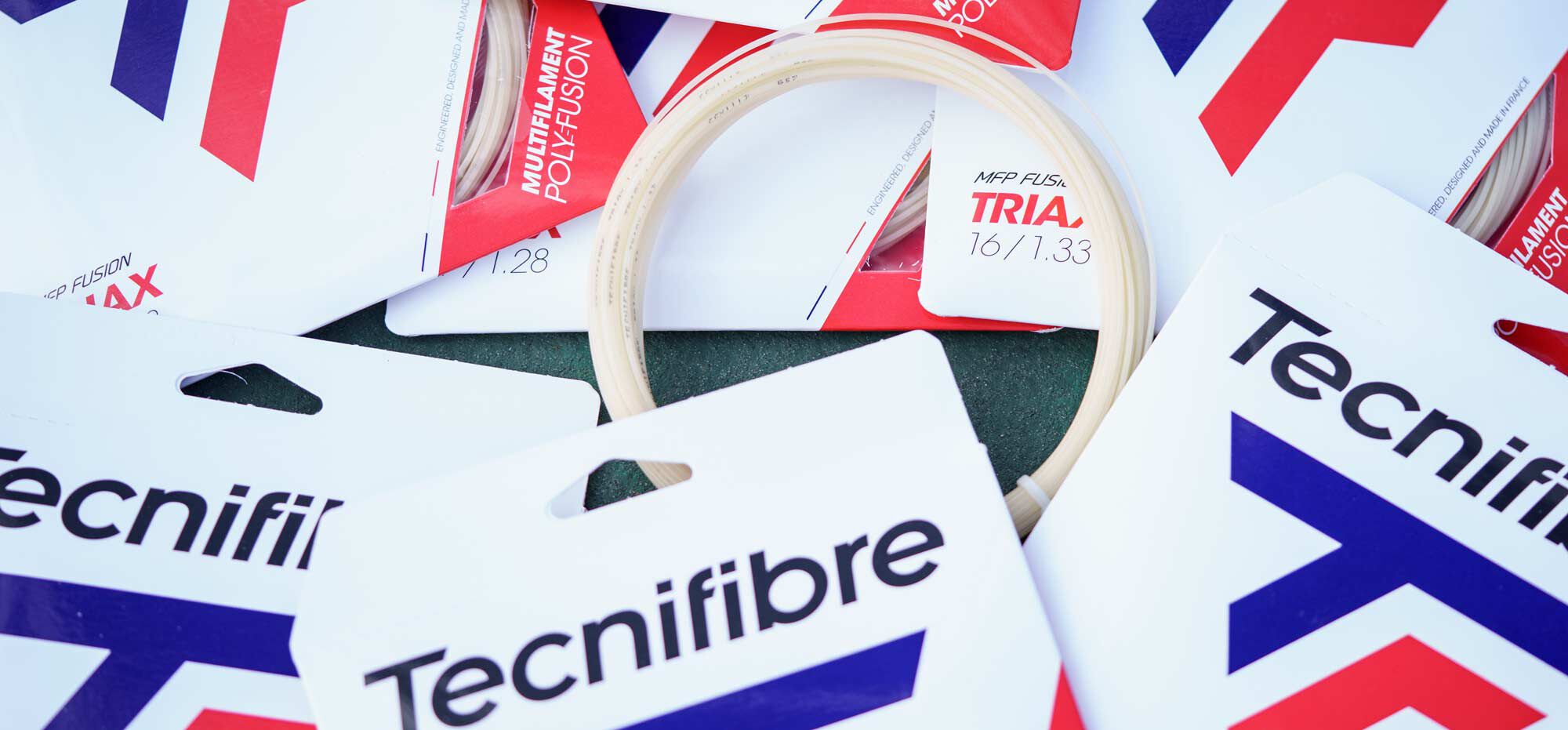THE 3 KEY TIPS FOR CHOOSING YOUR TENNIS STRINGS
Choosing the right tennis string is not trivial. A bad choice and we can end up playing with a string that does not suit us, that does not match the characteristics of our game, or even that tires our arms and our joints. So, here are some tips to help you choose your string, depending on your racquet and ... yourself.
TIP # 1: YOUR STRING SHOULD BE ADAPTED TO THE RACQUET
As we have already told you in our previous article, the string is primarily inseparablefrom the racquet (link: "See you here for more details"). So, we can start with this: the string completes the racquet, must adapt to it, adapt to its weight and structure.
If you have a light racquet, under 300 grams, this generates more shock (18% exactly) onthe forearm than a racquet over 300g, leading to more muscle fatigue. Therefore, we can say that a light racquet offers lightness and maneuverability when a heavier racquet guarantees more power. We can then recommend:
-A multifilament polyurethane string for a racquet below 300g (HDX Tour), which is more elastic and will generate maximum power for less arm fatigue.
-A monofilament polyester string for a racquet weighing more than 300g (Razor Code), a stiffer string that offers better control but also generates more arm fatigue.
IN SUMMARY:
Do you have a heavy racquet? Choose a monofilament string to channel the power of racquet weight and give you more control
Do you have a light racquet? Favor a multifilament string to compensate for the power deficit induced by the lightness of the racquet.

TIP # 2: THE STRING MUST TAKE INTO ACCOUNT YOUR GAME AND THE TYPE OF PLAYER YOU ARE
Secondly, one of the important things to remember about stringing is that you have to consider your game and your physical abilities. So, there is no point in copying the string (or even the racquet!) of your favorite player on the pretext that he plays well with these products.
And since the ball that reaches the center of the racquet causes very significant vibrations (shock of 100G for a ball thrown at 70km / h), the choice is very important.
When we talk about the type of player, it refers to both gender and age, but especially to the frequency of play and physical abilities (morphology, possible injuries ...). The game refers rather to the style of play (based on big strikes, on a very good defense, on a big service, etc.).
Therefore, several situations may suit you:
-You are looking for power. You would like to have more sharp and aggressive shots. You can then go for a multifilament string like HDX Tour, Duramix or TGV for more comfort. Otherwise, you can also decrease the tension of the string, which increases the trampoline effect and thus the power, or decrease the gauge of the string (which decreases its resistance).
-You are looking for control. You want to make fewer mistakes, or channel great power with equipment that gives you security and control. Conversely, here you can increase the gauge or the tension of your string. If not, opt for a softer polyester string, such as Black Code or Razor Code. Be careful however, this type of string is more demanding for the forearm, be sure to be physically developed before choosing a stiff string. Similarly, we advise against this type of string to young players in full growth: they could increase the chances of injury growing up.
-You are looking for comfort. To avoid injury, it is better to opt for a multifilament string such as X-One Biphase, more flexible, more powerful, and therefore more comfortable. The vibrations are lower, but so is the control.
IN SUMMARY:
-Looking for power, to create more winning strokes: opt for a multifilament string => HDX Tour, NRG², XR3, Duramix ...
-You want comfort, flexibility, to avoid vibrations and injuries: also prefer multifilament string. Power and flexibility go hand in hand. => TGV
-Looking for control, and you do not experience any pain in the forearm, prefer polyester monofilament string => Razor Code, Black Code, Pro Red Code ...

TIP # 3: TRY YOUR STRING BEFORE YOU BUY IT!
a. Polyester monofilament, the choice of control to avoid in case of shoulder pain and lack of power
Monofilament strings are made of polyester only. These are strings that bring resistance and control, to the detriment of comfort (muscular fatigue of the forearm). Polyester should be avoided in case of arm pain, as well as for young players who train very often and risk injury.
2 numbers to remember: because the polyester monofilament is 38% stiffer than polyurethane multifilament, it also generates 22% muscle fatigue more when you hit the ball!
Hybrid string: It is possible to combine the strength and control of polyester (on strings mainly), with the power and flexibility of nylon or multifilament, to increase comfort and ball length.
b. Multifilament strings: comfort & power
Multifilament strings consist of multiple interwoven filaments. The polyester discussed above can be added to polyamide, for example, to give a softer string, such as Duramix.
Multifilaments are more elastic and comfortable; but they are also less resistant. In terms of the characteristics of the game, they bring more power (they are close to natural gut, which is more expensive) and more comfort, limiting the pain associated with the repetition of impacts with the ball.
Hybrid string: just as nylon can be associated with polyester, multifilament, which comes close to it, can be associated with polyester. It is therefore preferable to position the multifilament horizontally and the polyester vertically. Indeed, the rising strings move more during the impact with the ball, are gradually cut by the cross ones, and that is why we may want a string resistant to the vertical.
And to finish…
=> To choose your string, take into account your type of game, your morphology, as well as your racquet, but above all, try several types of strings before choosing, to see how they react to your game and the keystrokes.